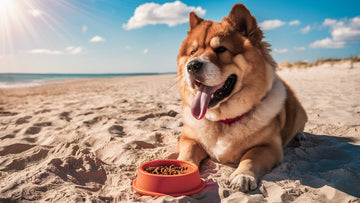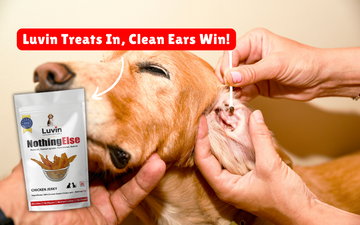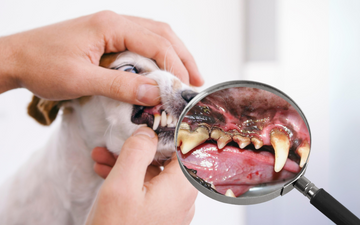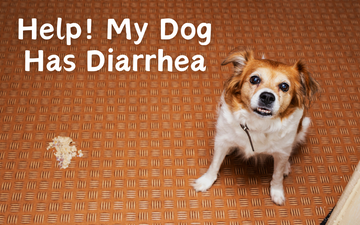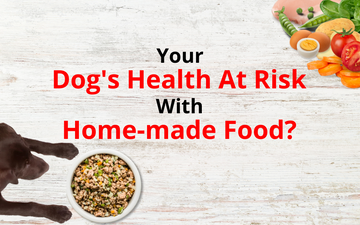
Dog food nutrition is very crucial as it plays an important role in the healthy growth and well-being of your dog. As pet parent, there are a lot of challenges that you face every day and finding the best dog food for your Fido is definitely one of them.
What is the best dog food? Simply put, Best dog food is the one that incorporates a perfect balance of macronutrients and micronutrients for optimal growth and functioning.
Macronutrients Are Vital
Macronutrients are required in large quantities by your dog to sustain bodily functions and provide energy to them.
Protein, fats and carbohydrate are three major micronutrients making up dog-dried food.
Proteins are used for almost all physiological functions in dog. Regular uptake of Proteins is required maintain normal metabolic processes and provide for tissue maintenance & growth. If you look deeper, body can synthesise protein itself if all necessary amino acids (underlying components) are available at cell level. However, there are 10 essential amino acids that must be supplied in a pet’s diet. At the same time animals cannot store excess amino acids which are then converted into fat for future energy usage. Also, the degree to which dietary proteins can be utilised depends on its digestibility and quality. Higher the quality & digestibility, lesser would it be needed for amino acid supply.
So while comparing between foods and deciding which is the best dog food, one needs to look at the quality & digestibility of protein
Chicken a high-quality protein which is easy to digest rich in nutrients and dogs enjoy the taste of chicken so much that they are going to lick their food bowls clean. We at Luvin prefer to use only one animal protein at a time in a recipe to avoid chances of food intolerances.
Fat is often looked upon negatively. The truth is, Fats are body’s primary source of stored energy. They also serve against heat loss, provide protective layer that guards against physical injury to organs, participate in transport of nutrients, amongst others. These are also very important because Fat acts as carrier for Fat soluble Vitamins. At the same time, it is essential for good palatability and texture of food. We are in a misconception that fats are bad for dogs but on the contrary they are an important macronutrient providing easy usable energy to support activity and metabolism of the dog.
Low amount of fat can lead to energy and Essential Fatty Acid deficiencies. At the same time excess would lead to fatty stools, diarrhea and weight gain. It is recommended to hence use complete & balanced commercially formulated dog food kibble.
Some people believe, adding additional fat to diet will improve coat quality. This is true when the pet is suffering from a deficiency, e.g. linoleic acid. And if so, the deficiency needs to be first identified and then supplemented otherwise it will end up imbalancing an already inadequate diet further.
Carbohydrates constitute 40-60% of dog food. They are the energy source and make the food palatable. Carbohydrates are important because if they are provided adequately, the body shall not utilize proteins for energy, which in turn shall be better used for tissue repair and growth. But, when the body is not utilizing energy supplied from carbohydrates, it converts it into fat. Hence, excess consumption of carbohydrates leads to obesity. and if you are looking for the best brand dog food you have to look at the recommended levels but as well as the ingredients you should take care of what dog eat because in the end their health is what matters the most.
We at Luvin prefer using low-glycemic starches as source of carbohydrates (as you shall see in our Luvin Grain-free Chicken & Rice Recipe). These carbohydrates typically are more slowly absorbed and digested and are from sources like sweet potato, potato, millets, etc. Foods with high-glycemic index starches lead to sudden spurt in blood glucose and insulin levels and have been seen to contribute to increased food intake and weight gain. Grain free food low glycaemic index starch blood glucose level does not spike up suddenly and avoid gluten, a protein, that is difficult digest. When choosing a nutritious dog food choose the one with more complex carbs ingredients.
While you are out there reading the dog food brand labels you will notice that almost all brands have followed the recommended nutrients level but always remember that the sources from which they come from are very important. You will have to understand dog food nutrition as good ingredient means higher bioavailability they can be easily absorbed and have better utilization and they don’t harm the dog; instead help them.
Micronutrients Are Not That Micro
Micronutrients are nutrients that are required in smaller quantities but are as important as macronutrients for proper maintenance and growth of the dog.
Minerals, for example, are inorganic elements that are say only 4% of an animal’s body weight but are essential for the body’s metabolic processes; excess or deficiency can impact various functions. They serve a variety of functions such as, activate reactions, provide skeletal support, aid in muscle contraction and maintain electrolyte balance.
Calcium and Phosphorous are usually discussed together due to their interrelation. The ideal ratio is 1.2:1 this ratio ensures that both the minerals are in appropriate amount to maintain a good bone health and the nervous system. Excess or deficiency both are undesirable; hence importance of balance. Sometimes you pay attention to macronutrients only but micronutrients are equlally important so always check what dog eat.
Vitamins help the performance of functions of the body. These are organic substances that the body needs to grow naturally. Excepting a few, Vitamins cannot be synthesized by the body and need to be supplied in the food. Complete and Balanced foods are formulated to provide necessary supplementation.
Vitamin deficiencies can cause health problems. The right vitamins help your dog's body to grow and repair itself. Vitamins help your dog’s body process other nutrients. E.g. Vitamin A deficiency could lead to impaired growth, reproductive failure or dermatosis. At Luvin, we look for natural vitamin sources like carob pods, liver, legumes and vegetables.(as you shall see in our Luvin Grain-free Chicken & Rice Recipe)
How Much To Feed?
Now that you have found your dog healthy food, many times you might wonder how much should I feed a particular dog food. You would usually find it mentioned on the pack. In case you find it confusing, here is a simplified formula
Feed (g)= (Energy on food packet (kcal)/( Weight of the dog in kg)^0.75 *105) *1000
How Many Times A Day Should I Feed My Dog?
It is advisable to split the daily meal allowance in portions throughout the day. Puppies need many small meals at regular intervals; we recommend 3-4 times a day. Increase the portion size and reduce the frequency as they grow; 2-3 times a day for adult dogs is good. As for humans, metabolism in canines also slows down as they age. This will give you the answer to how many times a day should I feed my dog. But at times you might see your puppy/adult asking for more even when they have been fed as per their daily allowance. Instead of adding more grain/rice, or so to say cooked starch, to satiate their hunger, add more fiber, e.g. beet pulp, pea fibre, and vegetables like brocolli. It shall help feel fuller while keeping weight in check.
Pet parenting, especially nutrition, can be daunting and confusing. It is easy to make mistakes because the impact only manifests over time. Let us know where we can help. The joy, love, and companionship that dogs bring into our lives often outweigh the challenges.



